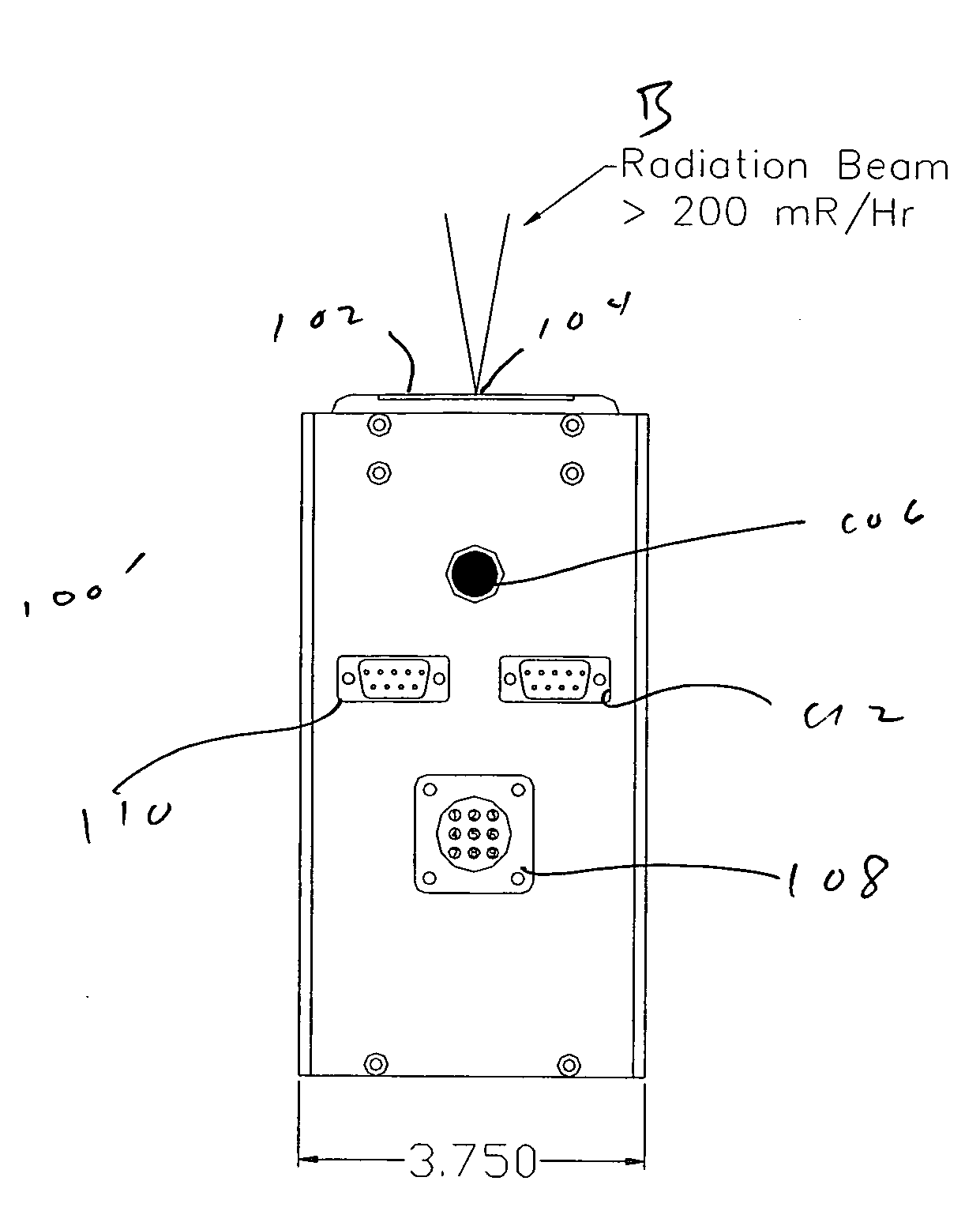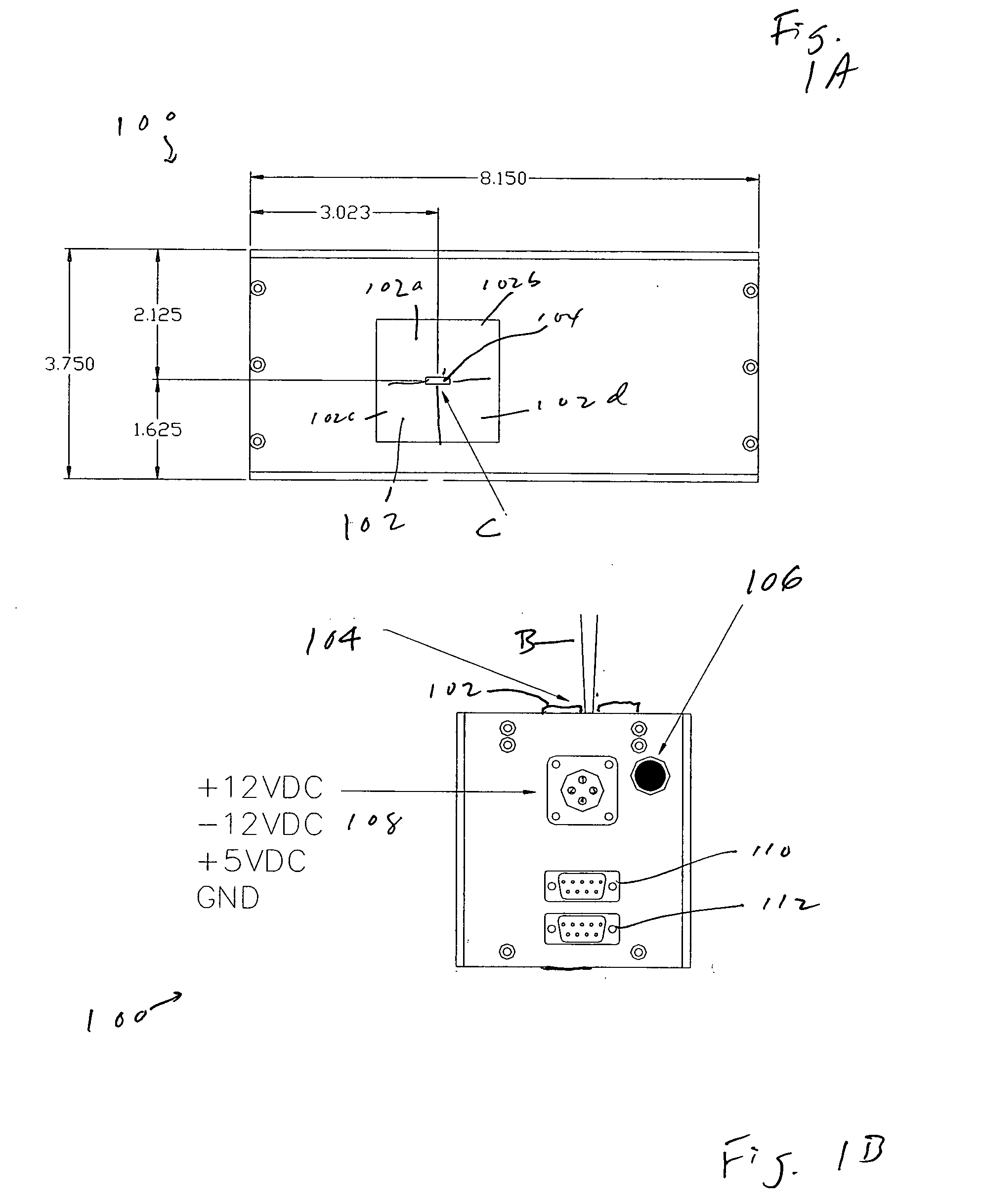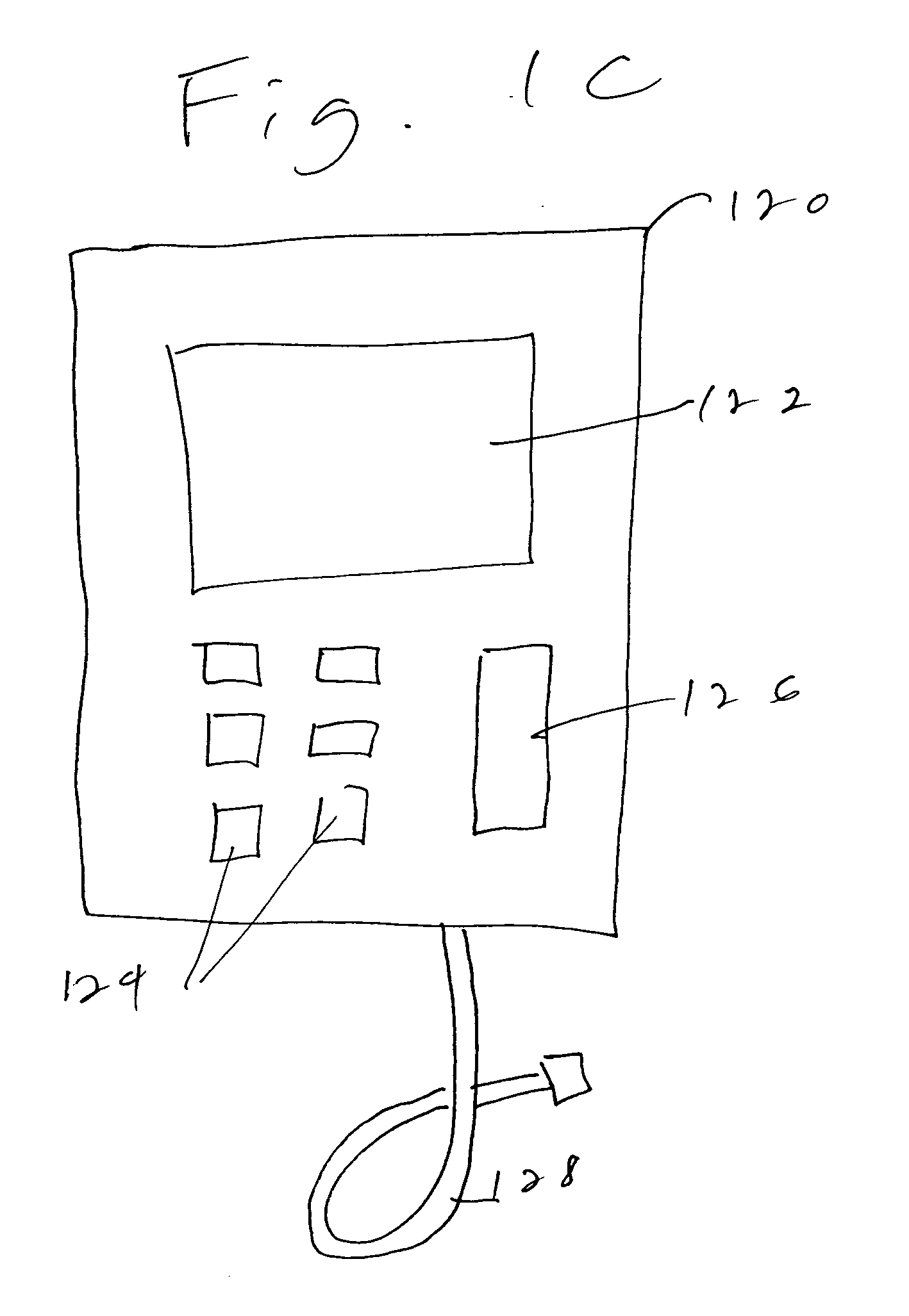Detector using carbon nanotube material as cold cathode for synthetic radiation source
- Summary
- Abstract
- Description
- Claims
- Application Information
AI Technical Summary
Benefits of technology
Problems solved by technology
Method used
Image
Examples
Embodiment Construction
[0075] Preferred embodiments of the invention will be set forth in detail with reference to the drawings, in which like reference numerals refer to like elements throughout.
[0076]FIGS. 1A and 1B show a top view and a front view, respectively, of an instrument 100 according to the first preferred embodiment of the present invention. This instrument 100 uses the method of measurement termed “Compton Backscatter,” which permits a measurement to be made from only one side of the material to be measured.
[0077] The instrument 100 emits a beam B in the manner described above. The beam B includes a beam center C. The instrument also has a detector 102 configured as a four-part solid-state detector having four elements 102a, 102b, 102c, 102d so positioned as to define a hole 104 through which the beam B emerges. On the front of the instrument 100 are the following: a beam-on indicator light 106, a power socket 108 (+12 VDC, −12 VDC, +5 VDC, ground), a first DB-9 female connector 110 for co...
PUM
 Login to View More
Login to View More Abstract
Description
Claims
Application Information
 Login to View More
Login to View More - R&D
- Intellectual Property
- Life Sciences
- Materials
- Tech Scout
- Unparalleled Data Quality
- Higher Quality Content
- 60% Fewer Hallucinations
Browse by: Latest US Patents, China's latest patents, Technical Efficacy Thesaurus, Application Domain, Technology Topic, Popular Technical Reports.
© 2025 PatSnap. All rights reserved.Legal|Privacy policy|Modern Slavery Act Transparency Statement|Sitemap|About US| Contact US: help@patsnap.com



